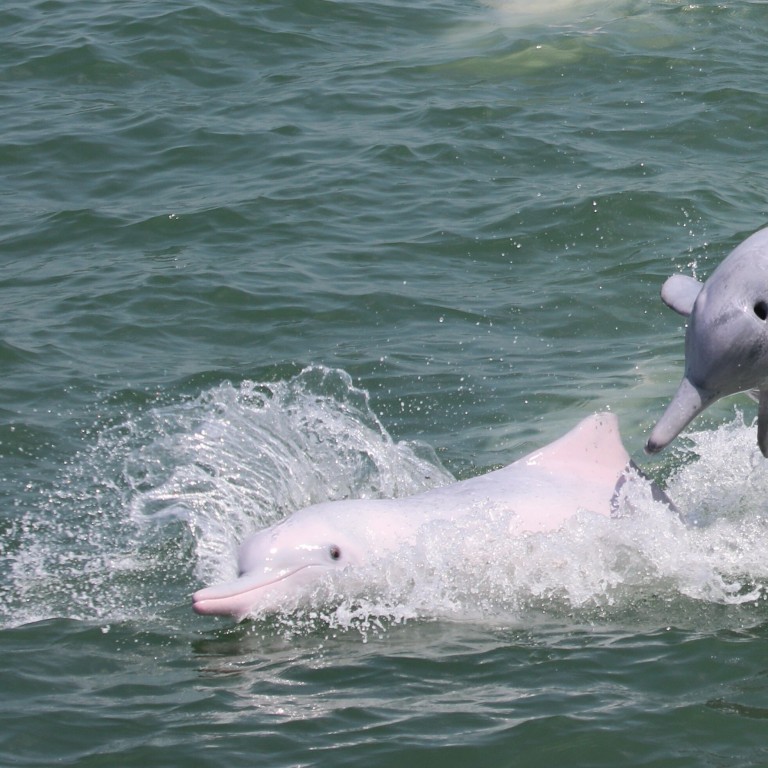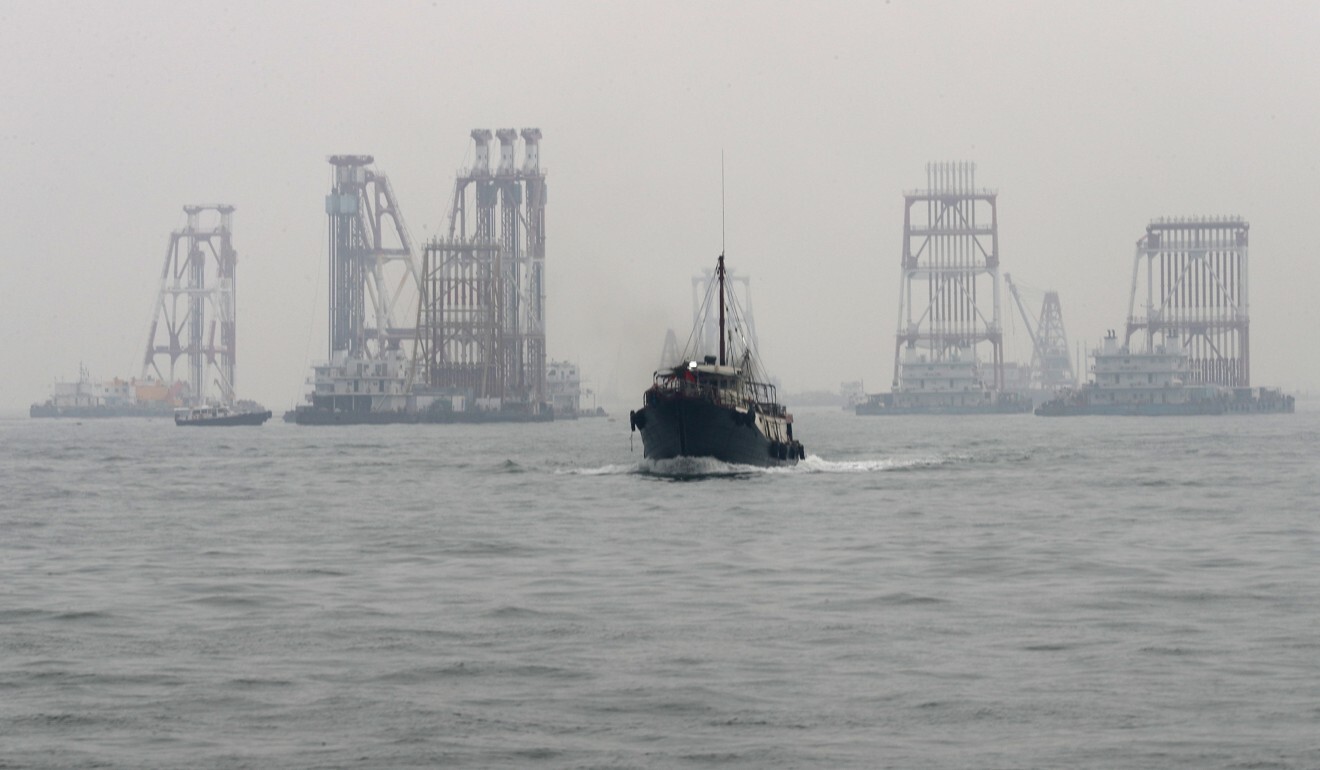
Hong Kong Airport Authority, conservation department urged to work together on white dolphins after disparate data
- Annual population surveys conducted by the two bodies routinely deliver vastly different results
- The surveys help gauge the impacts of the airport’s third runway construction project on the endangered dolphins
Hong Kong’s environmental watchdog has urged two government agencies to cooperate on monitoring the population of endangered Chinese white dolphins after years of separate surveys from both agencies threw up wildly different estimates.
Members of the Advisory Council on the Environment made the suggestion following a meeting with representatives from the Airport Authority on the implementation of measures to mitigate the environmental impact of Hong Kong’s third runway project.
For Hong Kong’s Chinese white dolphins, extinction is the ‘most likely outcome’ if no action taken
“Even though the Airport Authority and the Agriculture, Fisheries and Conservation Department were using the same methodology, the two departments reached very different results,” council chairman Stanley Wong Yuen-fai said.
“Therefore we think this is a very good opportunity to examine how these two departments can work together to allow us to have a more accurate grasp on the numbers of Chinese white dolphins.”
While the Airport Authority’s study last year had estimated there were only 40 of the dolphins in the waters around Lantau Island, where the airport is located, the Agriculture, Fisheries and Conservation Department had placed its estimate at 52. The authority had counted 71 in 2017 and 77 in 2018, while by comparison, the department counted 47 and 32, respectively.
Peter Lee Chung-tang, the Airport Authority’s general manager of sustainability, said the variation could be due to the two groups collecting data on different dates. “But the dolphin numbers fluctuate year to year, so it is hard to make any observation just on one year’s numbers,” he said.
The Airport Authority’s Chinese white dolphin monitoring programme started in 2016 to observe how construction of the HK$141.5 billion third runway project would affect the animals.
Consultants with the authority said in their report to the council they also expected the dolphins to shift their activity away from northern Lantau due to the third runway project. Construction started in 2016, and the new runway is expected to be completed by 2024. It will serve an additional 30 million passengers annually.

The controversial project previously came under fire for not properly taking into account its impact on the dolphins, as well as for a plan to transplant rare corals along the northern sea wall of the airport to Yam Tsai Wan off northeastern Lantau.
In its latest report, the authority said its first bid to relocate 56 whole colonies and 460 fragments of the corals in January 2017 had failed, with only three whole colonies surviving the move.
However, a second attempt in May 2018 to move 527 colonies was successful, with up to 98 per cent of the corals surviving as of the end of the monitoring period in September last year, authority consultants said.
Meanwhile, council members also questioned a fish restocking pilot effort in which 8,000 fish fry of commercially important species such as green grouper and yellowfin sea bream were released near the existing airport sea wall.
Hong Kong group urges authorities across Pearl River Delta to expand protected marine habitats
Council member Kenneth Leung Mei-yee said the types of fish released were not the preferred food source of Chinese white dolphins, and suggested a second phase of the plan should release fish better suited to the dolphins to attract them back after construction was completed.
While council chairman Wong acknowledged most of the mitigation measures were being implemented to preserve the habitat of the Chinese white dolphins, he said it was hard to tell at this point whether they would work.
“It is very hard to answer this question,” he said. “However, we think they need to continue to collect data, which will eventually show us how we can create a better marine environment, and not just for the Chinese white dolphins.”


